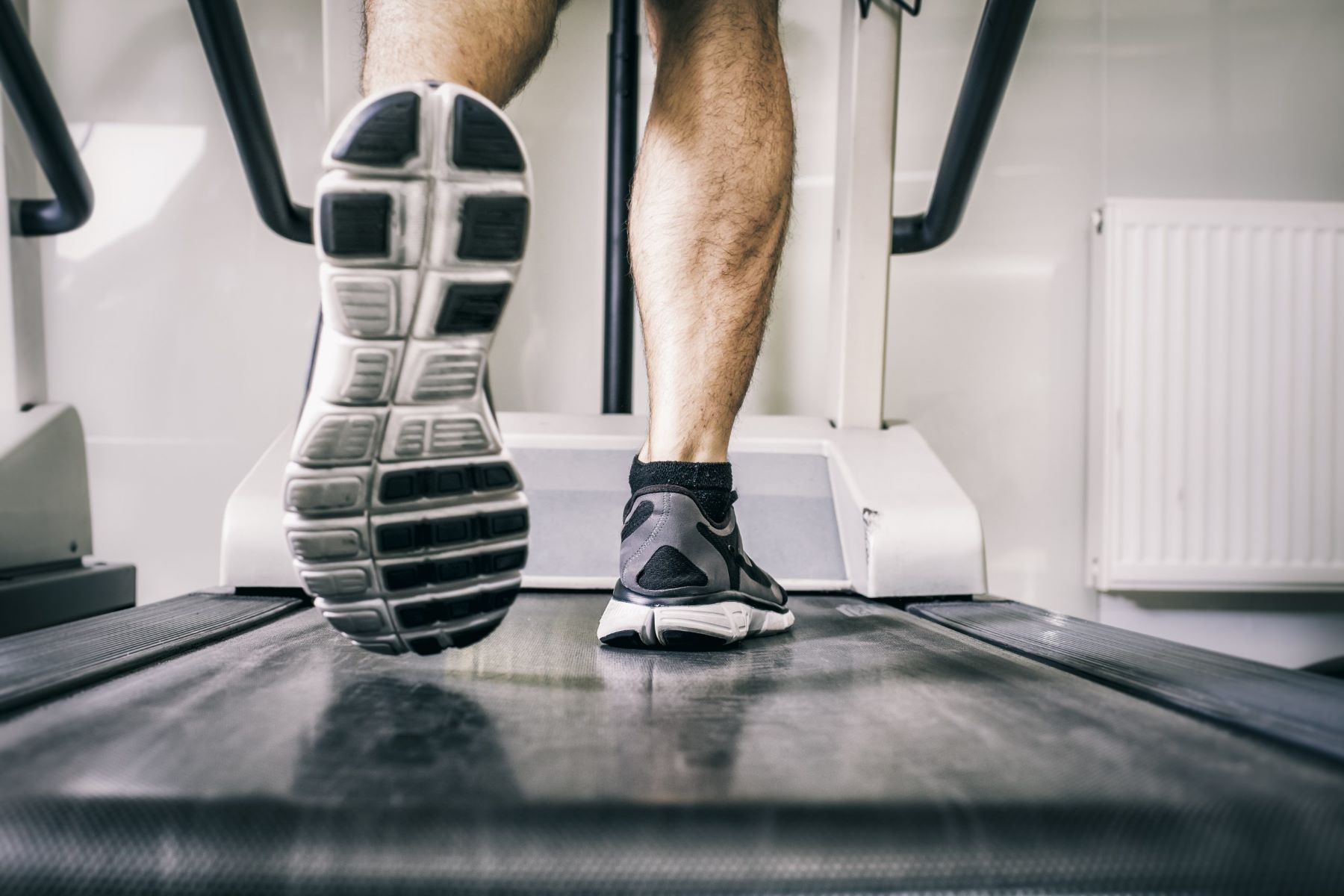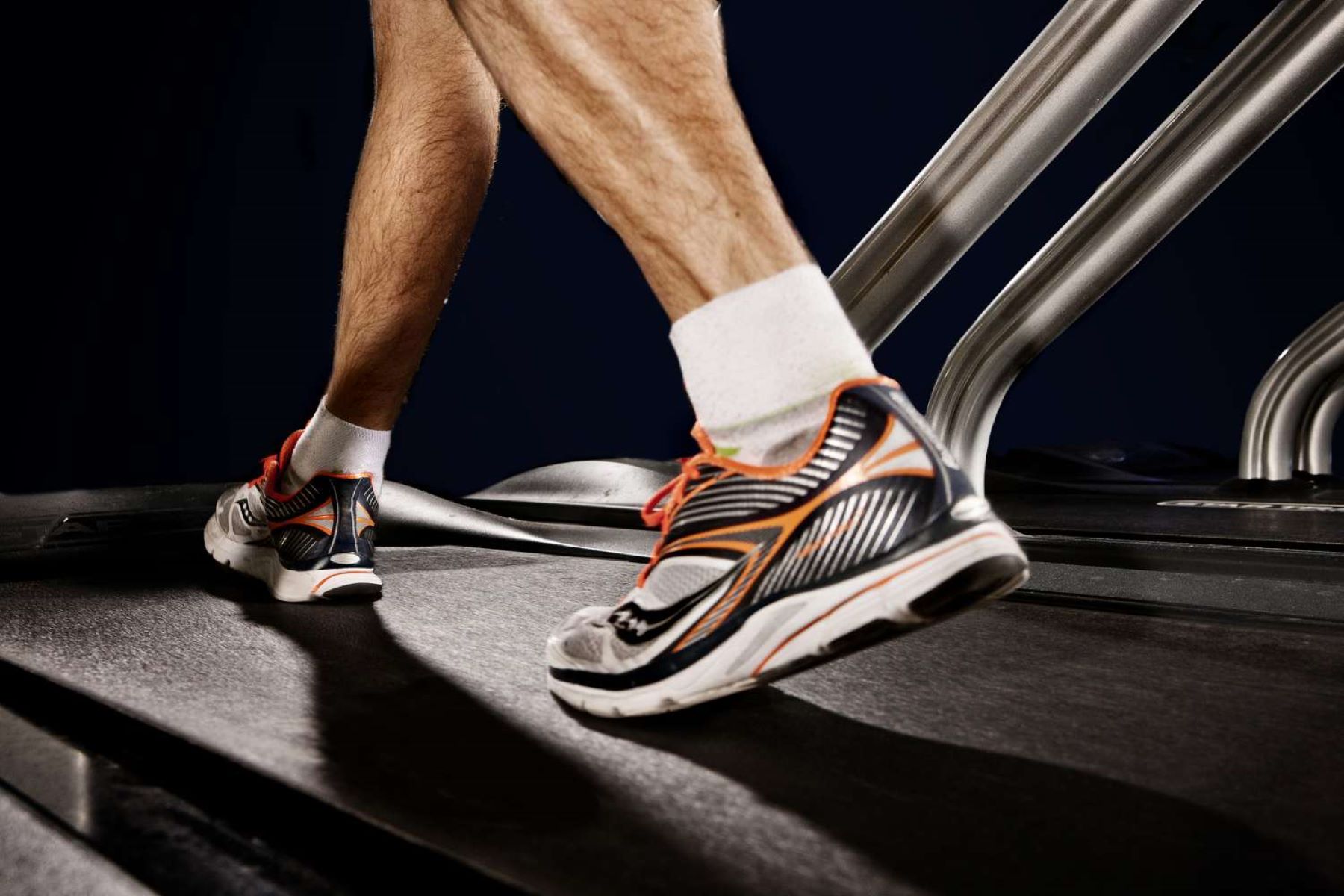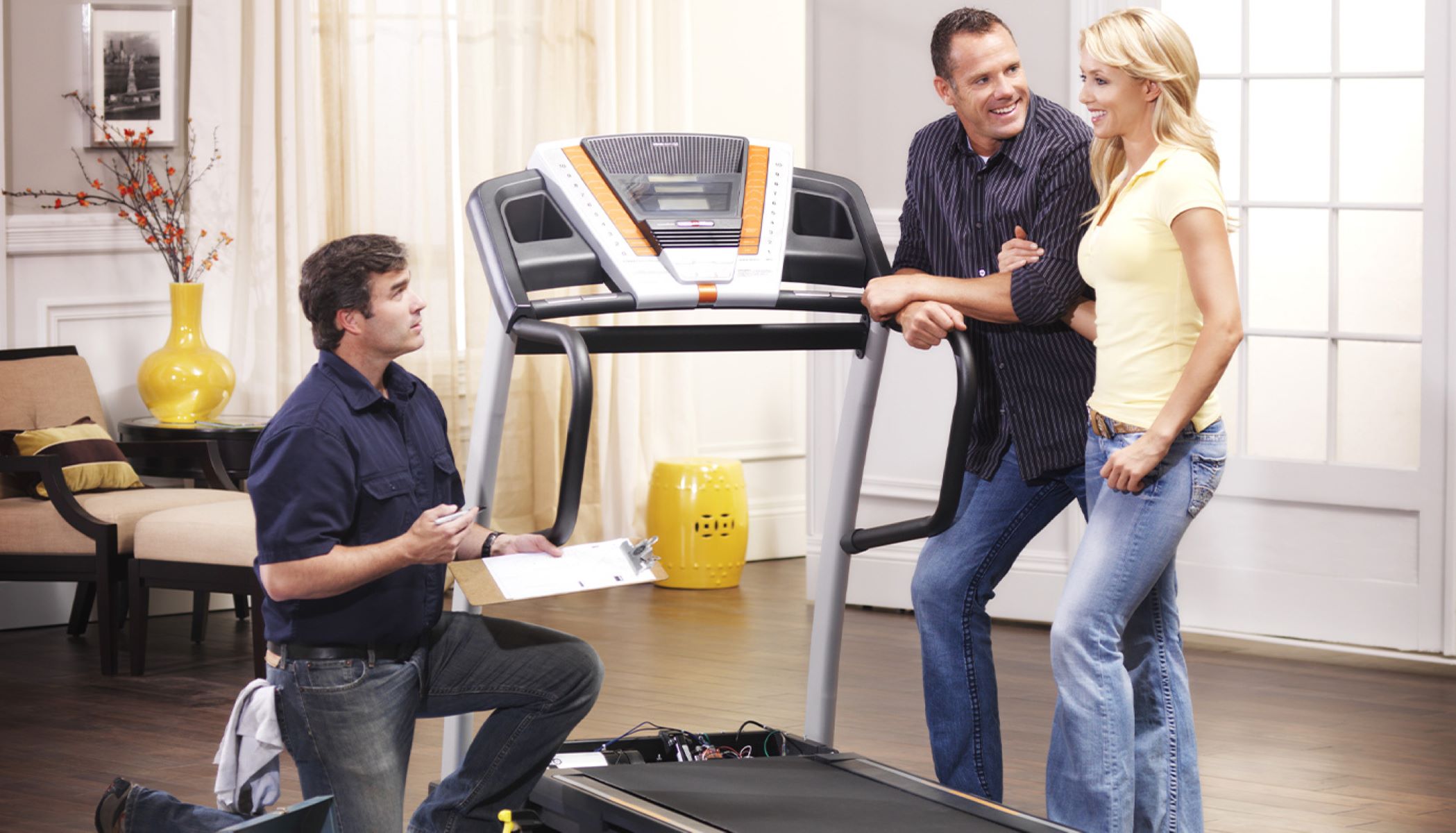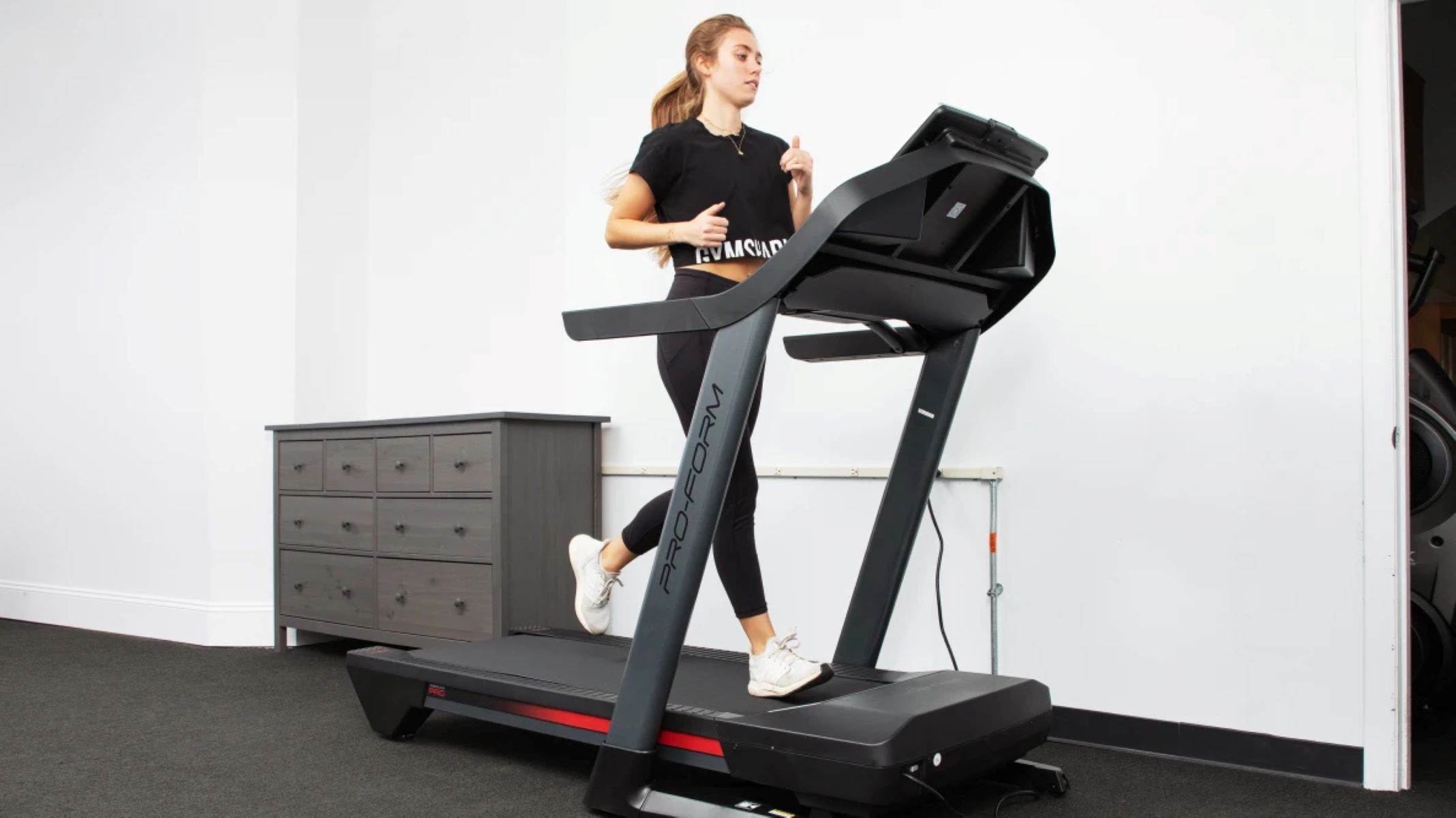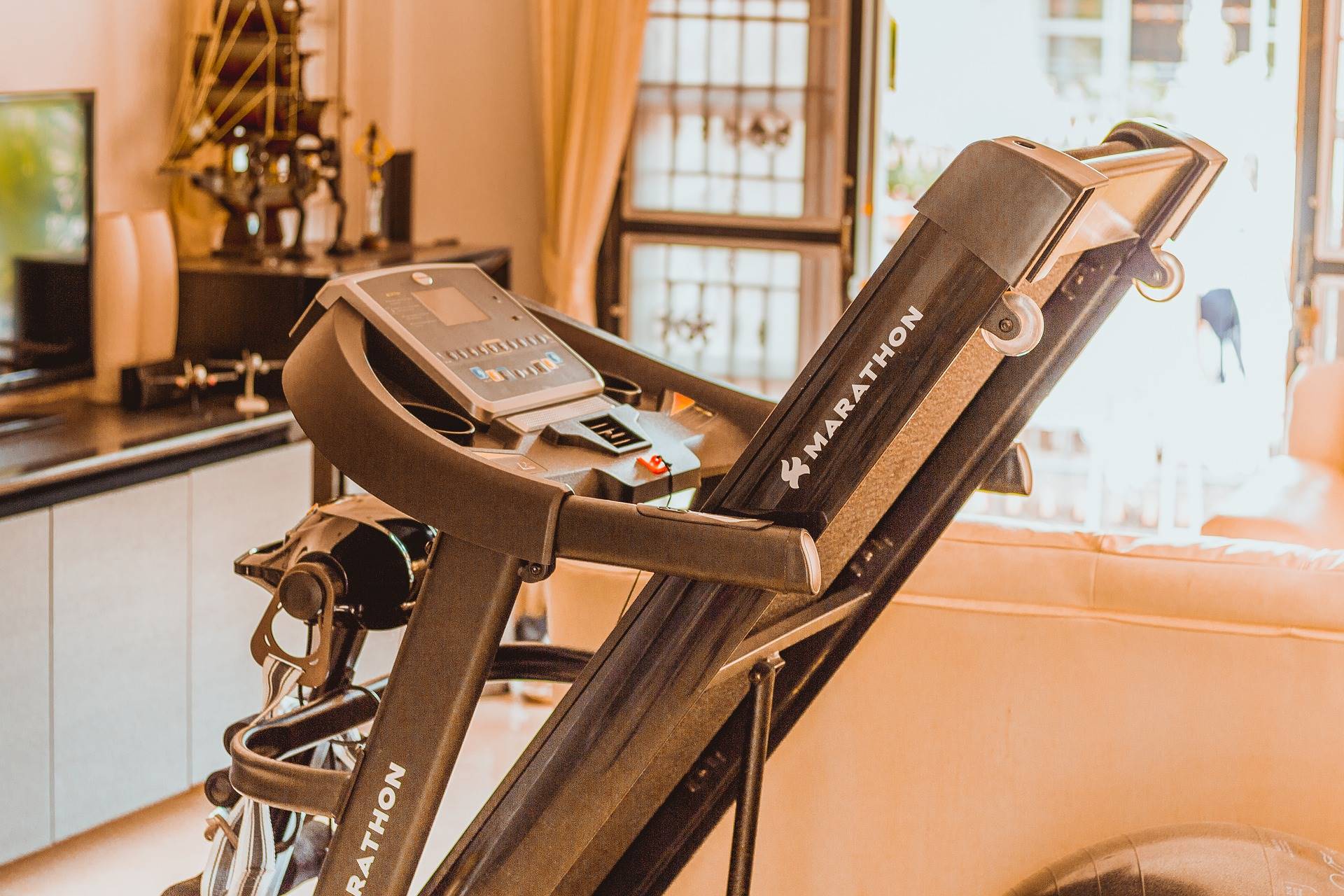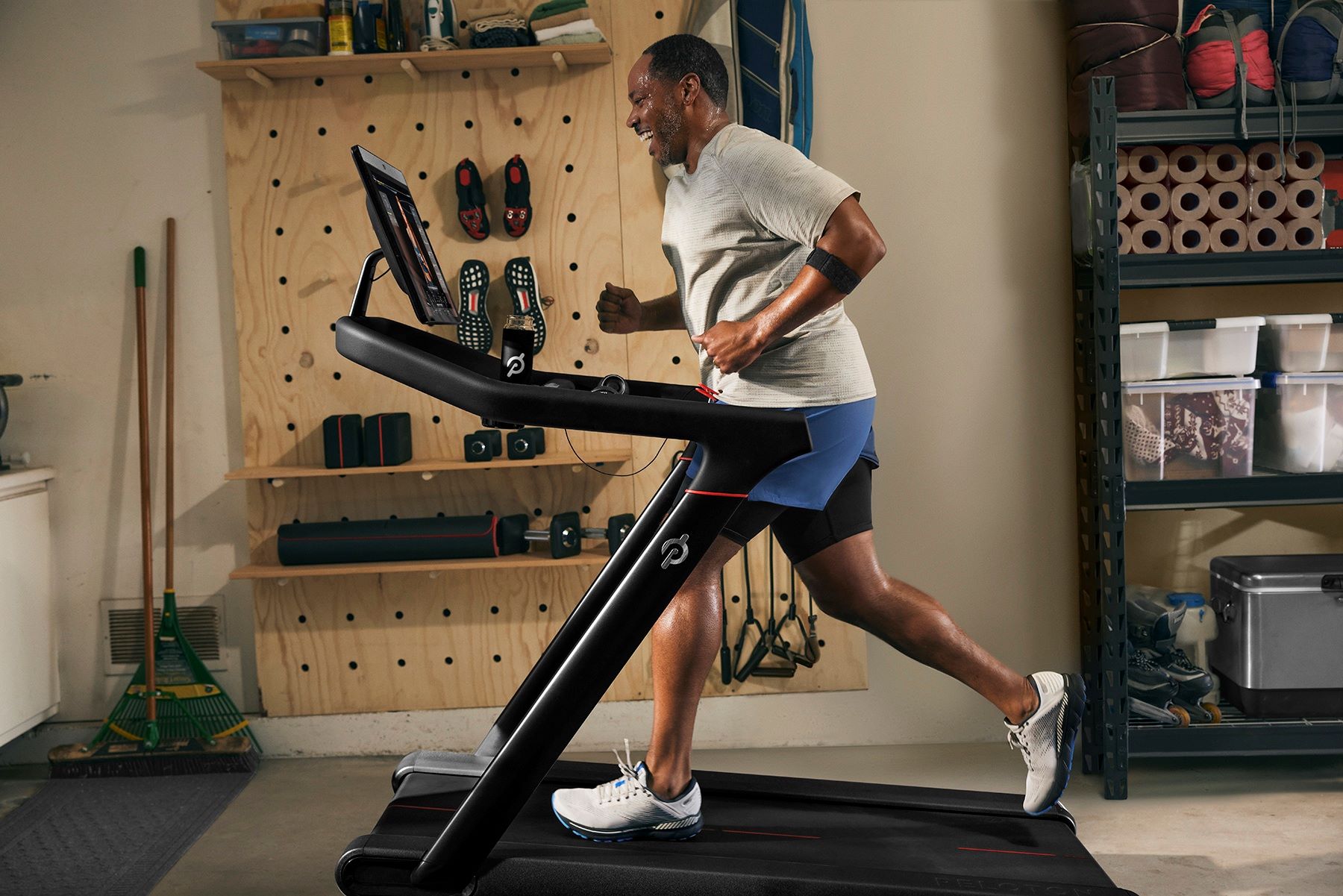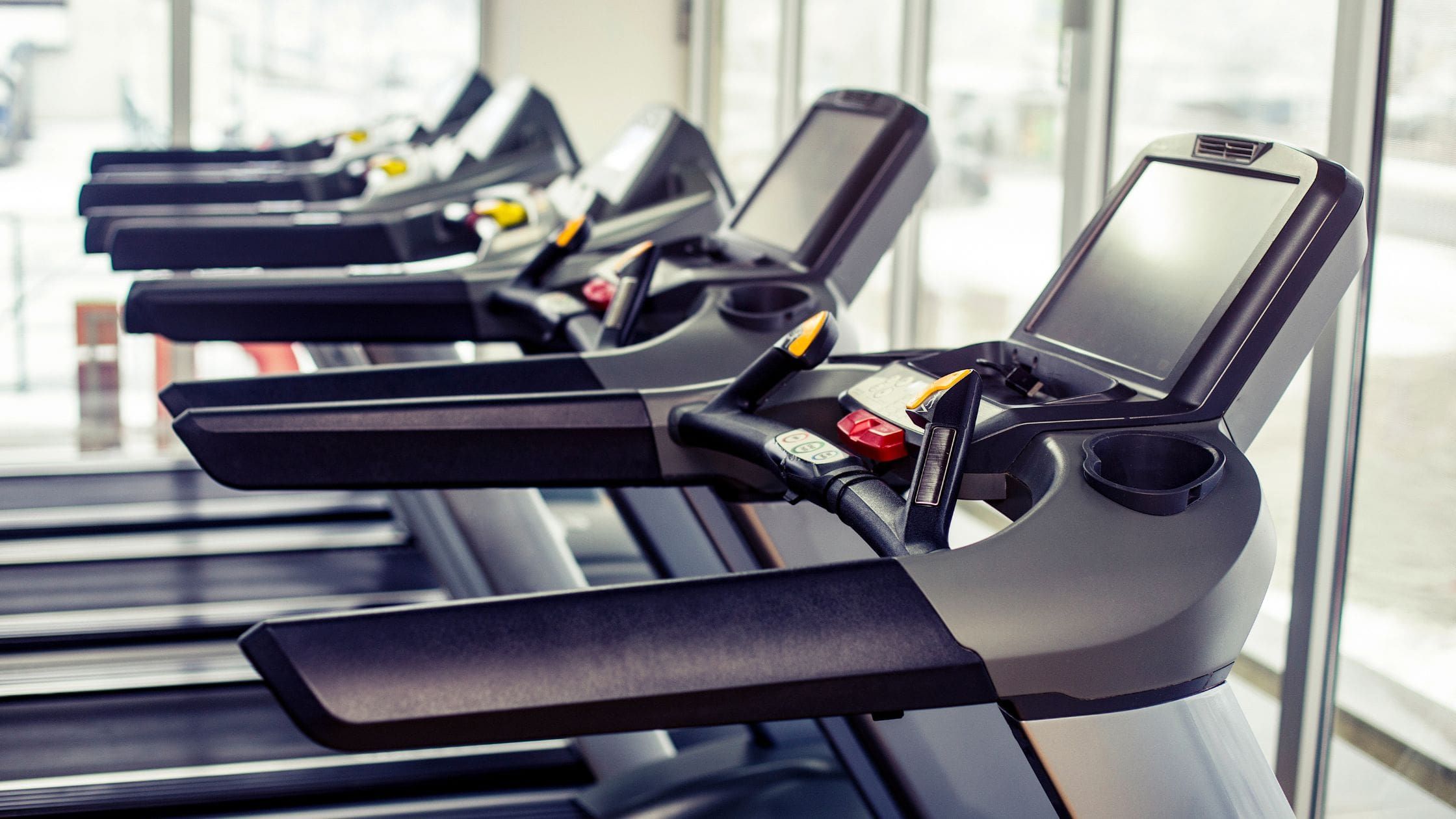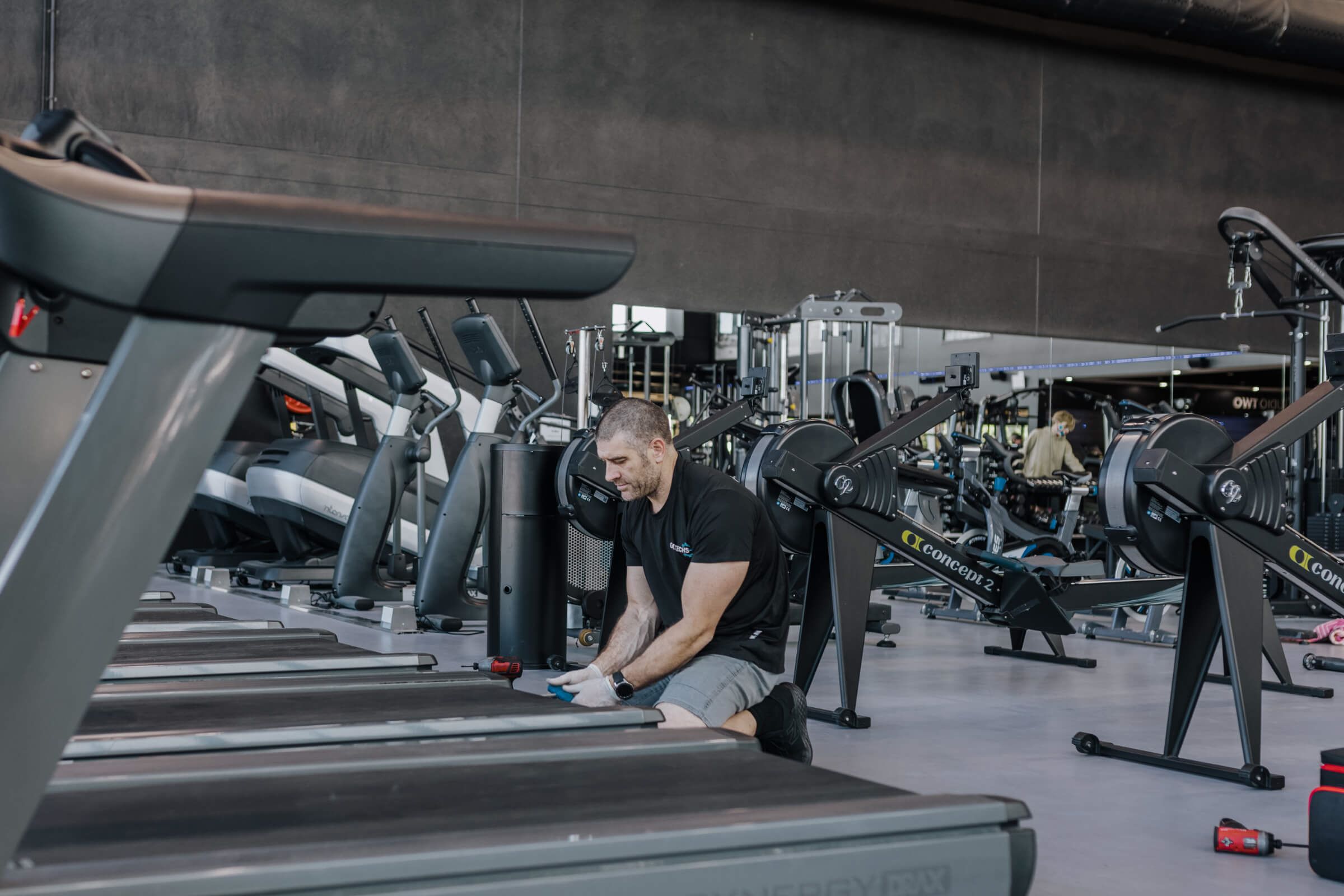

Featured
How To Fix A Treadmill
Modified: January 2, 2024
Discover the best ways to fix a treadmill with our featured guide. Get step-by-step instructions and expert tips for resolving common treadmill issues.
Introduction
When it comes to staying fit and healthy, treadmills have become a popular choice for exercise enthusiasts worldwide. Whether you prefer running, jogging, or walking, a treadmill offers the convenience of exercising in the comfort of your own home. However, like any other electronic device, treadmills can occasionally experience issues that hinder their performance.
If you’re facing problems with your treadmill, don’t worry! Many common treadmill issues can be easily fixed with a little bit of troubleshooting and basic maintenance. In this article, we will guide you through the step-by-step process of fixing your treadmill and getting it back in working order.
Before we dive into the specific steps, it’s important to emphasize the significance of safety precautions. Remember to always unplug your treadmill before conducting any repairs or maintenance. Additionally, if you’re unsure about any step or feel uncomfortable working on your treadmill, it is best to consult a professional technician.
In the following sections, we will cover the most common issues that can arise with treadmills, the tools and equipment you’ll need for the repairs, and a detailed guide on how to fix each problem. By the end of this article, you will be equipped with the knowledge and confidence to tackle treadmill issues on your own.
So, let’s get started and bring your treadmill back to life! Whether it’s a malfunctioning power cord, a loose drive belt, or a misaligned speed sensor, we’ve got you covered. Follow the steps outlined in this article, and you’ll soon be back on track to achieving your fitness goals with a fully functioning treadmill.
Common Issues with Treadmills
Treadmills, like any other piece of machinery, can encounter a range of common issues. Understanding these issues is the first step in troubleshooting and fixing your treadmill. Here are some of the most common problems you may encounter:
- Power Cord Problems: One of the most common issues with treadmills is a faulty power cord. This can result in a complete loss of power or intermittent shutdowns during use. Inspecting the power cord for any signs of damage or wear is crucial in resolving this issue.
- Circuit Breaker Tripping: If your treadmill suddenly shuts off while in use, the circuit breaker might have tripped. This occurs when the electrical load exceeds the breaker’s capacity. Resetting the circuit breaker is a simple fix for this problem.
- Drive Belt Issues: A loose or worn-out drive belt can cause slipping or jerky movements. This can be fixed by adjusting the tension of the drive belt or replacing it if necessary.
- Lubrication Problems: Insufficient lubrication between the belt and deck can cause friction and lead to excessive wear and tear. Regularly lubricating the belt and deck is essential for smooth and noise-free operation.
- Belt Alignment and Tension: The treadmill belt should be properly aligned and have appropriate tension. If the belt is too loose or too tight, it can affect the performance and longevity of the treadmill. Adjusting the belt tension is crucial for optimal performance.
- Speed Sensor Misalignment: The speed sensor ensures accurate speed readings on the console. If the readings are inconsistent or inaccurate, the speed sensor may be misaligned. Calibrating the speed sensor can help in resolving this issue.
- Console and Control Issues: Problems with the console or controls can range from unresponsive buttons to inaccurate display readings. Cleaning the console and controls regularly can help resolve these issues.
It’s important to note that while these are common issues, each treadmill model may have its own unique set of problems. Always refer to the manufacturer’s manual or contact customer support for specific troubleshooting guidance.
In the next sections, we will go over the necessary tools and equipment you’ll need and provide step-by-step instructions to fix these common treadmill problems. By addressing these issues, you can prolong the lifespan of your treadmill and ensure optimal performance during your workouts.
Tools and Equipment Needed
Before you start troubleshooting and fixing your treadmill, it’s important to gather the necessary tools and equipment. Having these items on hand will make the process smoother and more efficient. Here’s a list of the tools and equipment you’ll need:
- Screwdriver: A Phillips head screwdriver is typically used to remove screws and access different parts of the treadmill.
- Adjustable Wrench: This tool comes in handy for tightening or loosening nuts and bolts, especially when adjusting the tension of the belt or performing other repairs.
- Lubricant: A treadmill-specific lubricant is required to properly lubricate the belt and deck. Make sure to use the manufacturer-recommended type and follow the instructions for application.
- Clean Cloth: A soft, clean cloth is necessary for wiping down the console, controls, and other parts of the treadmill to remove dust, dirt, and debris.
- Brush: A brush with soft bristles will help clean hard-to-reach areas, such as the motor, drive belt, and speed sensor.
- Measuring Tape: This is useful for ensuring proper alignment and tension of the belt during the repair process.
- Replacement Parts: Depending on the specific issue, you may need to have replacement parts on hand, such as a new power cord, drive belt, or speed sensor. It’s important to check with the manufacturer or refer to the treadmill’s manual for the recommended replacement parts.
Having these tools and equipment readily available will save you time and frustration during the repair process. Make sure to have a dedicated workspace where you can safely work on the treadmill without any distractions.
In the following sections, we will guide you through the step-by-step process of fixing the common issues we discussed earlier using the tools and equipment mentioned above. Remember to always follow safety precautions and consult professional help if needed.
Step 1: Safety Precautions
Before you begin troubleshooting and repairing your treadmill, it’s crucial to prioritize safety. Taking the necessary precautions will ensure your well-being and prevent any accidents or further damage to the equipment. Here are some important safety measures to follow:
- Unplug the Treadmill: Before conducting any repairs or maintenance, make sure to unplug the treadmill from the power source. This will eliminate the risk of electric shock and ensure your safety while working on the machine.
- Wear Protective Gear: When working on the treadmill, wear protective gear such as gloves and safety goggles. This will protect your hands from sharp edges or moving parts and your eyes from any debris or splashes during lubrication.
- Work in a Well-Lit Area: Ensure that your workspace is well-lit, allowing you to see clearly and avoid any accidental slips or trips.
- Keep the Area Clear: Clear the surrounding area of any potential obstacles or objects that may interfere with your repair work. This will provide ample space to work around the treadmill safely.
- Read the Manual: Familiarize yourself with the manufacturer’s manual for specific safety instructions and precautions related to your treadmill model. Different treadmills may have unique safety considerations, so it’s important to be informed.
- Take Your Time: Rushing through repairs can lead to mistakes or accidents. Take your time, follow the step-by-step instructions carefully, and ensure that each repair is done correctly.
- Consult a Professional if Necessary: If you’re unsure about any repair or maintenance task or feel uncomfortable working on the treadmill, it’s best to consult a professional technician. They have the expertise and experience to handle complex repairs and ensure your safety.
By prioritizing safety and following these precautions, you can minimize the risk of injury and create a safe environment for yourself while repairing your treadmill. Once you’ve taken these measures, you can proceed with confidence to the next steps of troubleshooting and fixing common treadmill issues.
Step 2: Powering Off the Treadmill
Before you start inspecting and fixing your treadmill, you must ensure that it is completely powered off. This step is crucial for your safety and prevents any accidental starting of the treadmill during the repair process. Follow these steps to power off the treadmill properly:
- Locate the Power Switch: Look for the power switch on your treadmill. It is usually located near the front or side of the machine, either on the console or the base.
- Turn Off the Power Switch: Once you’ve located the power switch, flip it to the “Off” position. This will cut off the power supply to the treadmill.
- Unplug the Power Cord: After turning off the power switch, unplug the power cord from the wall outlet. This step ensures that there is no remaining electrical current flowing to the treadmill.
- Confirm the Power Is Off: Before you proceed with any repairs or maintenance, double-check that the treadmill is completely powered off. Look for any indicator lights or displays that may still be illuminated. If any lights or displays are still on, repeat the previous steps to ensure the power is fully disconnected.
By following these steps, you can be confident that your treadmill is safely powered off and there is no risk of accidental starting or electrical shock during the repair process. Remember to never skip this step and always prioritize your safety while working on any electrical equipment.
Now that you have successfully powered off your treadmill, you are ready to move on to the next step of troubleshooting and fixing the common issues that may be causing problems with your machine.
Step 3: Inspecting the Power Cord
The power cord is a critical component of your treadmill, as it supplies electricity to the machine. If your treadmill is experiencing power issues or intermittent shutdowns, the power cord may be the culprit. Follow these steps to thoroughly inspect the power cord:
- Visual Inspection: Start by examining the power cord visually. Look for any visible signs of damage or wear, such as frayed wires, cuts, or exposed insulation. Pay close attention to the areas where the cord connects to the machine and the wall outlet.
- Gently Feel the Cord: Run your fingers along the entire length of the power cord, feeling for any abnormalities like kinks or soft spots. These irregularities can indicate damage to the cord and may require repair or replacement.
- Check the Prongs: Inspect the prongs of the power cord’s plug. Ensure that they are not bent or broken and that they fit securely into the wall outlet. Bent or damaged prongs can hinder the flow of electricity and cause power issues.
- Test with a Multimeter (optional): If you have access to a multimeter, you can further test the power cord’s continuity. Set the multimeter to the “Ohms” or “Resistance” mode and touch the probes to the plug’s prongs. A reading other than zero could indicate a problem with the cord’s wiring.
If you notice any signs of damage or abnormalities during the inspection, it’s best to replace the power cord. Contact the manufacturer or a certified technician to obtain a compatible replacement cord for your specific treadmill model. It’s important to use a cord that meets the manufacturer’s specifications to ensure proper functioning and safety.
By thoroughly inspecting the power cord, you can identify any issues that may be causing power problems in your treadmill. Fixing or replacing a faulty power cord can resolve many common treadmill issues and get you back to your workout routine in no time.
In the next step, we will explore how to reset the circuit breaker, another common troubleshooting technique for resolving power-related treadmill issues.
Step 4: Resetting the Circuit Breaker
If your treadmill suddenly shuts off during use or fails to turn on altogether, the circuit breaker may have been tripped. Resetting the circuit breaker is a simple yet effective troubleshooting technique. Follow these steps to reset the circuit breaker on your treadmill:
- Locate the Circuit Breaker: Look for the circuit breaker on your treadmill. It is typically located near the power switch or on the treadmill’s base. The circuit breaker is a small, rectangular switch that may be labeled as “Reset” or “Circuit Breaker”.
- Check the Position: In its tripped state, the circuit breaker switch will be in the “Off” or middle position, indicating that it has been triggered.
- Reset the Circuit Breaker: To reset the circuit breaker, switch it to the “On” or “Reset” position. This action restores the flow of electricity to the treadmill.
- Wait for a Few Minutes: After resetting the circuit breaker, wait for a few minutes before attempting to turn on the treadmill. This allows the internal components to reset and stabilize.
- Power On the Treadmill: Once the waiting period is over, turn on the power switch and test the treadmill. If the circuit breaker tripped due to a temporary power surge or overload, resetting it should resolve the issue, and the treadmill should power on and function properly.
If the circuit breaker continues to trip repeatedly or the treadmill fails to power on even after resetting the circuit breaker, there may be an underlying electrical problem that requires further investigation. In such cases, it is recommended to consult a professional technician for assistance.
Resetting the circuit breaker can be an efficient way to troubleshoot power-related issues with your treadmill. By following these steps, you can easily reset the circuit breaker and potentially resolve the problem, saving you time and money on unnecessary repairs.
Next, we will move on to Step 5, where we will guide you through the process of checking the drive belt for any issues and adjusting its tension if necessary.
Step 5: Checking the Drive Belt
The drive belt is a crucial component of your treadmill that connects the motor to the treadmill’s running deck. A loose or worn-out drive belt can cause slipping, jerky movements, or even complete loss of power. Follow these steps to check the drive belt on your treadmill:
- Access the Drive Belt: Begin by accessing the drive belt. Depending on your treadmill model, you may need to remove a cover or lift the treadmill’s walking deck to gain access to the belt.
- Inspect the Drive Belt: Look closely at the drive belt for any signs of wear, fraying, or stretching. A worn-out belt will appear cracked or shiny, indicating that it is in need of replacement. Additionally, check if the belt feels loose or if it can be easily moved side to side.
- Tension Adjustment: To check the tension of the belt, press down on it with your fingers. Ideally, the belt should have some give but not feel overly loose. If the belt feels loose or slips when walking or running on the treadmill, it requires adjustment.
- Tightening the Belt: To tighten the belt, locate the adjustment bolts or screws on the treadmill. These are typically located at the rear of the machine. Using an adjustable wrench or the appropriate tool, turn the bolts or screws in a clockwise direction to increase the tension of the belt. Make small adjustments and check the tension after each adjustment until the desired tightness is achieved.
- Test the Belt: Once you have adjusted the tension, test the belt by walking or running on the treadmill at a slow speed. Ensure that the belt runs smoothly and does not slip or make any unusual noises. If there are any issues, make additional adjustments as needed.
If the drive belt is severely worn or appears to be damaged, it is recommended to replace it. Contact the manufacturer or a professional technician for assistance in obtaining a compatible replacement belt for your specific treadmill model.
By checking and adjusting the drive belt, you can ensure that it is in optimal condition and functioning properly. A properly tensioned belt will provide smooth and consistent performance, allowing you to enjoy your treadmill workouts without any interruptions.
In the next step, we will guide you through the process of lubricating the belt and deck, which is essential for maintaining a smooth and quiet operation.
Step 6: Lubricating the Belt and Deck
Lubricating the belt and deck of your treadmill is an important maintenance task that ensures smooth and quiet operation. Over time, the friction between the belt and deck can cause wear and tear, leading to a decrease in performance. Follow these steps to properly lubricate the belt and deck:
- Refer to the Manual: Check the manufacturer’s manual for specific instructions on the type of lubricant recommended for your treadmill model. Different treadmills may require different types of lubricants, so it’s essential to use the correct one.
- Power Off and Unplug: Before applying any lubricant, make sure the treadmill is powered off and unplugged from the electrical outlet. This ensures your safety and avoids any accidental starting of the treadmill during the lubrication process.
- Loosen the Belt: Use the adjustment bolts or screws to loosen the tension of the belt slightly. This will provide easier access to the space between the belt and the deck for lubrication.
- Apply the Lubricant: Following the manufacturer’s instructions, apply the recommended amount of lubricant to the space between the belt and the deck. Use a clean cloth or the applicator provided with the lubricant to evenly distribute the lubricant along the entire length of the underside of the belt.
- Spread the Lubricant: After applying the lubricant, turn on the treadmill and allow it to run at a slow speed for a few minutes. This helps to evenly distribute the lubricant across the belt and deck. You may observe excess lubricant being pushed out from the sides, which is normal.
- Wipe Excess Lubricant: Once the lubrication process is complete, turn off the treadmill and use a clean cloth to wipe away any excess lubricant from the belt and deck. This prevents the accumulation of debris and ensures a clean operating surface.
- Retighten the Belt: Finally, use the adjustment bolts or screws to retighten the belt to the manufacturer’s recommended tension. The belt should not be too loose or too tight, as either extreme can affect the treadmill’s performance.
Regularly lubricating your treadmill’s belt and deck is essential for maintaining optimal performance. The frequency of lubrication will depend on the manufacturer’s recommendations and the usage of your treadmill. Refer to the manual for guidance on the recommended lubrication schedule.
By properly lubricating the belt and deck, you can minimize friction, reduce noise, and extend the lifespan of your treadmill. This simple maintenance step will ensure smooth and enjoyable workouts for years to come.
In the next step, we will guide you through the process of adjusting the belt tension to ensure proper alignment and functioning of your treadmill.
Step 7: Adjusting the Belt Tension
Maintaining the proper tension of the belt on your treadmill is crucial for smooth and safe operation. If the belt is too loose, it may slip or create an uneven running surface. On the other hand, if the belt is too tight, it can strain the motor and cause unnecessary wear. Follow these steps to adjust the belt tension on your treadmill:
- Refer to the Manual: Consult the manufacturer’s manual for specific instructions on how to adjust the belt tension for your treadmill model. The manual will provide you with the necessary information on the location of the adjustment bolts or screws.
- Loosen the Rear Roller Bolts: Begin by using an appropriate tool, such as a wrench or Allen key, to carefully loosen the rear roller bolts. These bolts can usually be found at the back of the treadmill, on both sides of the deck.
- Adjust the Tension: With the rear roller bolts loosened, you can now adjust the tension of the belt. To tighten the belt, turn the bolts clockwise, and to loosen the belt, turn the bolts counterclockwise. Make small adjustments at a time to ensure precise tensioning.
- Check the Belt Alignment: As you make adjustments, keep an eye on the alignment of the belt. It should be centered and run straight without rubbing against the sides of the treadmill. Make additional adjustments if necessary to achieve proper alignment.
- Test the Belt: Once you are satisfied with the belt tension and alignment, test the belt by walking or running on the treadmill at a slow speed. Pay attention to any slipping or jerky movements. If the belt slips, tighten the tension slightly, and if it is too tight, loosen the tension.
It’s important to note that the proper belt tension may vary depending on the specific treadmill model. Follow the manufacturer’s guidelines to ensure you achieve optimal tension for your particular treadmill.
Regularly checking and adjusting the belt tension will ensure a smooth and comfortable workout experience and extend the life of your treadmill. A properly tensioned belt promotes efficient and safe operation, allowing you to focus on your fitness goals without any distractions.
In the next step, we will guide you through the process of calibrating the speed sensor to ensure accurate speed readings on your treadmill’s console.
Step 8: Calibrating the Speed Sensor
The speed sensor in your treadmill ensures accurate speed readings on the console. If you notice that the speed readings are inconsistent or inaccurate, calibrating the speed sensor can help resolve the issue. Follow these steps to calibrate the speed sensor on your treadmill:
- Refer to the Manual: Consult the manufacturer’s manual for specific instructions on how to calibrate the speed sensor for your treadmill model. The manual will provide you with the necessary information on the location of the speed sensor and the calibration process.
- Access the Speed Sensor: Start by locating the speed sensor on your treadmill. Depending on the model, it is typically located near or attached to the front or rear roller.
- Clean the Speed Sensor: Gently clean the speed sensor using a soft cloth or brush. Dust, dirt, or debris on the sensor can interfere with its function and accuracy.
- Check the Sensor Alignment: Ensure that the speed sensor is correctly aligned with the magnet or target wheel located on the front or rear roller. The sensor should be positioned close enough to detect the movement of the magnet as the belt rotates.
- Adjust the Sensor Position: If the alignment is off, adjust the sensor’s position accordingly. Use the manufacturer’s guidelines to determine the correct distance between the sensor and the magnet or target wheel.
- Calibrate the Sensor (if applicable): Some treadmill models require manual calibration of the speed sensor. This typically involves accessing the calibration mode on the console and following the on-screen prompts to initiate the calibration process.
- Test the Speed Readings: Once you’ve cleaned, aligned, and calibrated the speed sensor (if necessary), test the treadmill by walking or running at different speeds. Monitor the console for accurate speed readings. The displayed speed should correspond to your actual pace.
Calibrating the speed sensor ensures that you receive accurate feedback on your treadmill’s console. If you encounter any issues during the calibration process or the speed readings continue to be inconsistent, consult the manufacturer’s troubleshooting guide or contact their customer support for further assistance.
By calibrating the speed sensor, you can enjoy precise speed feedback during your workouts, allowing you to track your progress accurately and maintain the desired pace.
In the next step, we will guide you through the process of cleaning the console and controls to maintain their optimal functionality.
Step 9: Cleaning the Console and Controls
Regularly cleaning the console and controls of your treadmill is essential to maintain their optimal functionality. Over time, dust, sweat, and other debris can accumulate on the surface, leading to sticky buttons, unresponsive touchscreens, or inaccurate readings. Follow these steps to clean the console and controls of your treadmill:
- Power Off and Unplug: Before you begin cleaning, make sure the treadmill is powered off and unplugged from the electrical outlet. This ensures your safety and prevents any accidental activation of the controls during the cleaning process.
- Use a Dry Cloth: Start by using a dry, clean cloth to wipe away any visible dust or surface debris from the console and control panel. Gently wipe in a circular motion to avoid scratching the surface.
- Clean with Mild Soap Solution: Prepare a mild soapy solution by mixing a few drops of liquid soap with warm water. Dampen a clean cloth or sponge in the solution and wring out any excess moisture.
- Gently Wipe the Surface: Use the damp cloth or sponge to clean the console and control panel. Pay attention to areas with buttons, touchscreens, or displays, as they often accumulate more dirt and sweat. Avoid applying excessive moisture to prevent water damage.
- Focus on Buttons and Controls: For sticky or unresponsive buttons, use a cloth or cotton swab slightly dampened with the soapy solution. Gently clean around the buttons and controls, removing any dirt or residue that may be affecting their functionality.
- Use a Dry Cloth to Dry: After cleaning, use a dry cloth to thoroughly dry the console and controls. This helps to prevent any moisture buildup that could lead to damage or malfunction.
- Avoid Harsh Chemicals or Abrasives: It is important to avoid using harsh chemicals or abrasive cleaners on the console and controls, as they can damage the surface or remove the protective coating. Stick to mild soap solutions and soft cloths for safe and effective cleaning.
Regularly cleaning the console and controls of your treadmill will ensure that they remain responsive and perform optimally. A clean console not only enhances the overall appearance of your treadmill but also provides a more enjoyable user experience during your workouts.
In the next step, we will guide you through the process of reassembling the treadmill and testing its functionality after completing the repairs and maintenance steps.
Step 10: Reassembling and Testing the Treadmill
After completing the necessary repairs and maintenance on your treadmill, it’s time to reassemble the various components and test the functionality of the machine. Follow these steps to ensure proper reassembly and a successful testing process:
- Refer to the Manual: Consult the manufacturer’s manual for any specific reassembly instructions or guidelines for your treadmill model. It will provide you with detailed information on how to correctly put the different components back together.
- Replace Any Removed Parts: If you had to remove any covers, belts, or other components during the repair process, make sure to put them back in their proper positions. Ensure that all screws, bolts, or other fasteners are securely tightened to prevent any loose or unstable parts.
- Plug In and Power On: Once all the parts are reassembled, plug in the treadmill to the power source and turn on the power switch.
- Test the Functions: Test different functions of the treadmill, such as adjusting the speed, changing the incline (if applicable), and using the various workout programs available. Ensure that all buttons, controls, and console features are working smoothly and accurately.
- Monitor the Belt Performance: Walk or run on the treadmill at a slow speed, paying attention to the performance of the belt. Ensure that it remains centered and doesn’t shift or slip during use. Listen for any unusual noises or vibrations that may indicate an underlying issue.
- Check Safety Features: Verify that all safety features, such as the emergency stop button or safety key, are functioning properly. Ensure that they immediately stop the treadmill when activated.
- Perform a Trial Workout: If everything appears to be working correctly, proceed with a short trial workout to further test the treadmill’s performance. Increase the speed gradually to ensure a smooth transition and monitor any changes in speed or incline settings.
- Ensure Proper Lubrication: If you lubricated the belt and deck during the maintenance process, verify that the lubrication is sufficient and providing a smooth running experience. If necessary, add more lubricant according to the manufacturer’s recommendations.
By following these steps and thoroughly testing the treadmill, you can ensure that all repairs have been completed successfully and the machine is fully functional. This final step allows you to have peace of mind and confidence in your treadmill’s performance during your future workouts.
Remember, if you encounter any issues or notice any unusual behavior during the testing process, refer back to the relevant steps or consult the manufacturer’s troubleshooting guide for further assistance.
Conclusion
Repairing and maintaining your treadmill doesn’t have to be a daunting task. By following the step-by-step process outlined in this guide, you can troubleshoot and fix common issues that may arise with your treadmill. From inspecting the power cord to adjusting the belt tension and calibrating the speed sensor, each step plays a vital role in keeping your treadmill in optimal working condition.
Remember to prioritize safety throughout the repair process. Always unplug the treadmill before starting any repairs, wear protective gear, and consult a professional if you’re unsure about any step or feel uncomfortable working on the machine.
Regularly cleaning and lubricating your treadmill are crucial for its longevity and optimal performance. By conducting regular maintenance, you can minimize wear and tear, prevent potential problems, and prolong the lifespan of your machine.
If you encounter complex issues or are unsure about performing certain repairs, it’s always best to seek professional help. Technicians with expertise in treadmill repair can efficiently diagnose and resolve complex problems, ensuring the safety and functionality of your treadmill.
Remember, a well-maintained treadmill provides a reliable and enjoyable exercise experience. By following these steps and implementing regular maintenance, you can keep your treadmill in top shape and stay on track with your fitness goals for years to come.
